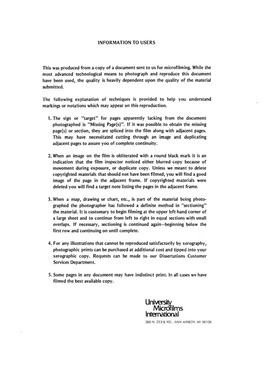| dc.contributor.author | Hirschlein, John Arthur, | en_US |
| dc.date.accessioned | 2013-08-16T12:28:24Z | |
| dc.date.available | 2013-08-16T12:28:24Z | |
| dc.date.issued | 1981 | en_US |
| dc.identifier.uri | https://hdl.handle.net/11244/4896 | |
| dc.description.abstract | The purpose of this study was to develop a belief in life after death scale (LADS). Ten belief constructs and 85 belief concepts were used as a basis for the generation of 103 belief statements. Completion of the LADS required respondents to score each of the 103 items on two Likert-type scales: a "True" scale and an "Important" scale. The LADS was administered to 399 volunteer subjects. When factor analyzed, three factors emerged and were named Judeo-Christian Teachings, Mind-Body Transformation, and Belief in Ghosts and Spirits. Forty-one statements were retained for the final LADS, resulting in test-retest reliabilities of .93 for the "True" scale and .90 for the "Important" scale. Content, concurrent, and construct validity are reported. Demographic variables such as age, education, and recency of death of friend or relative were not found to be significantly related to the LADS. Applications of the LADS include use as a research tool, subject material to lessen the social taboo surrounding the discussion of death, and a structure which individuals can use to further refine and develop their beliefs concerning afterlife. | en_US |
| dc.format.extent | vi, 79 leaves ; | en_US |
| dc.publisher | The University of Oklahoma. | en_US |
| dc.subject | Education, Educational Psychology. | en_US |
| dc.subject | Education. | en_US |
| dc.title | Construction of a Life After Death Scale. | en_US |
| dc.type | Thesis | en_US |
| dc.thesis.degree | Ph.D. | en_US |
| dc.note | Source: Dissertation Abstracts International, Volume: 42-07, Section: A, page: 3074. | en_US |
| ou.identifier | (UMI)AAI8129412 | en_US |
| ou.group | Other | |
